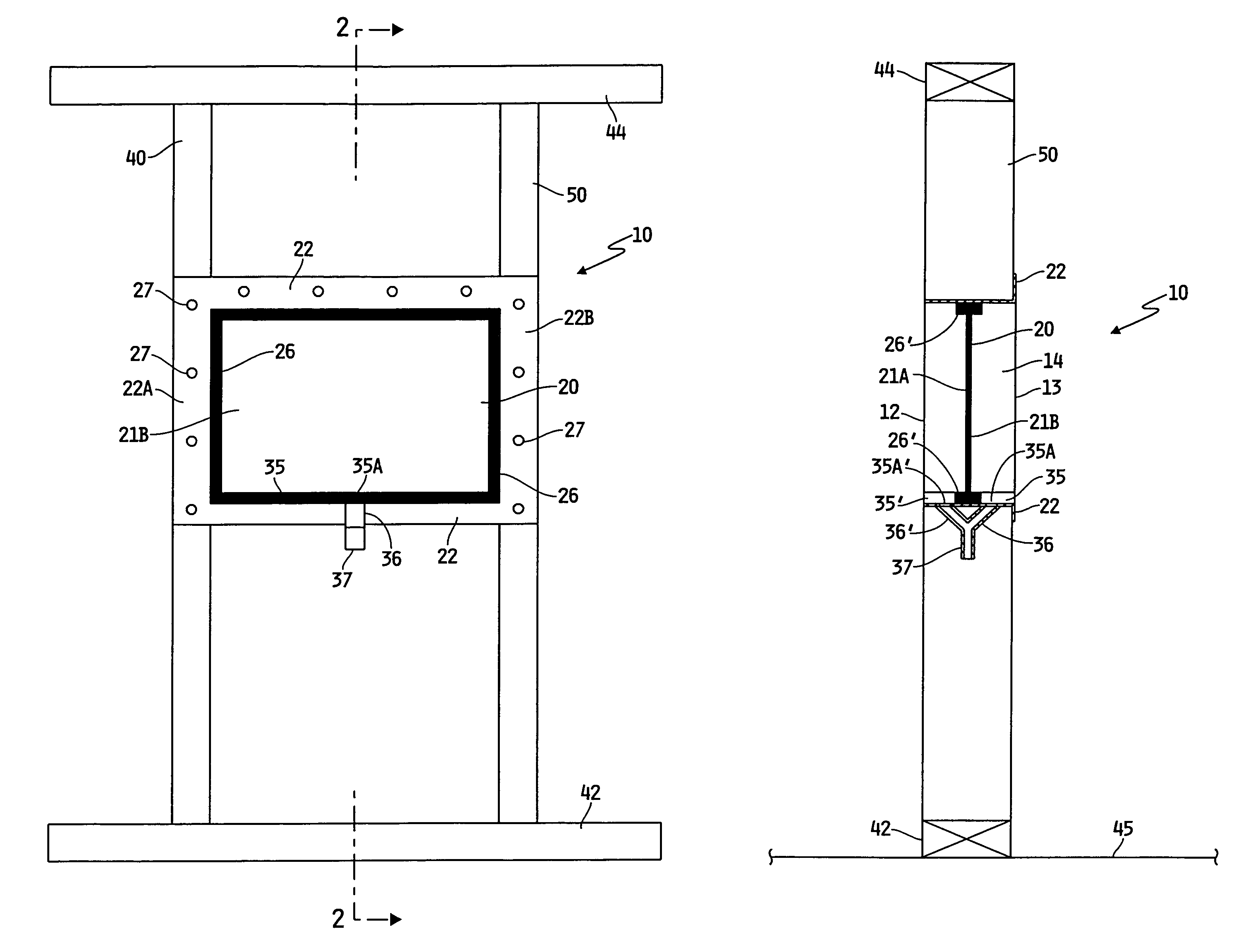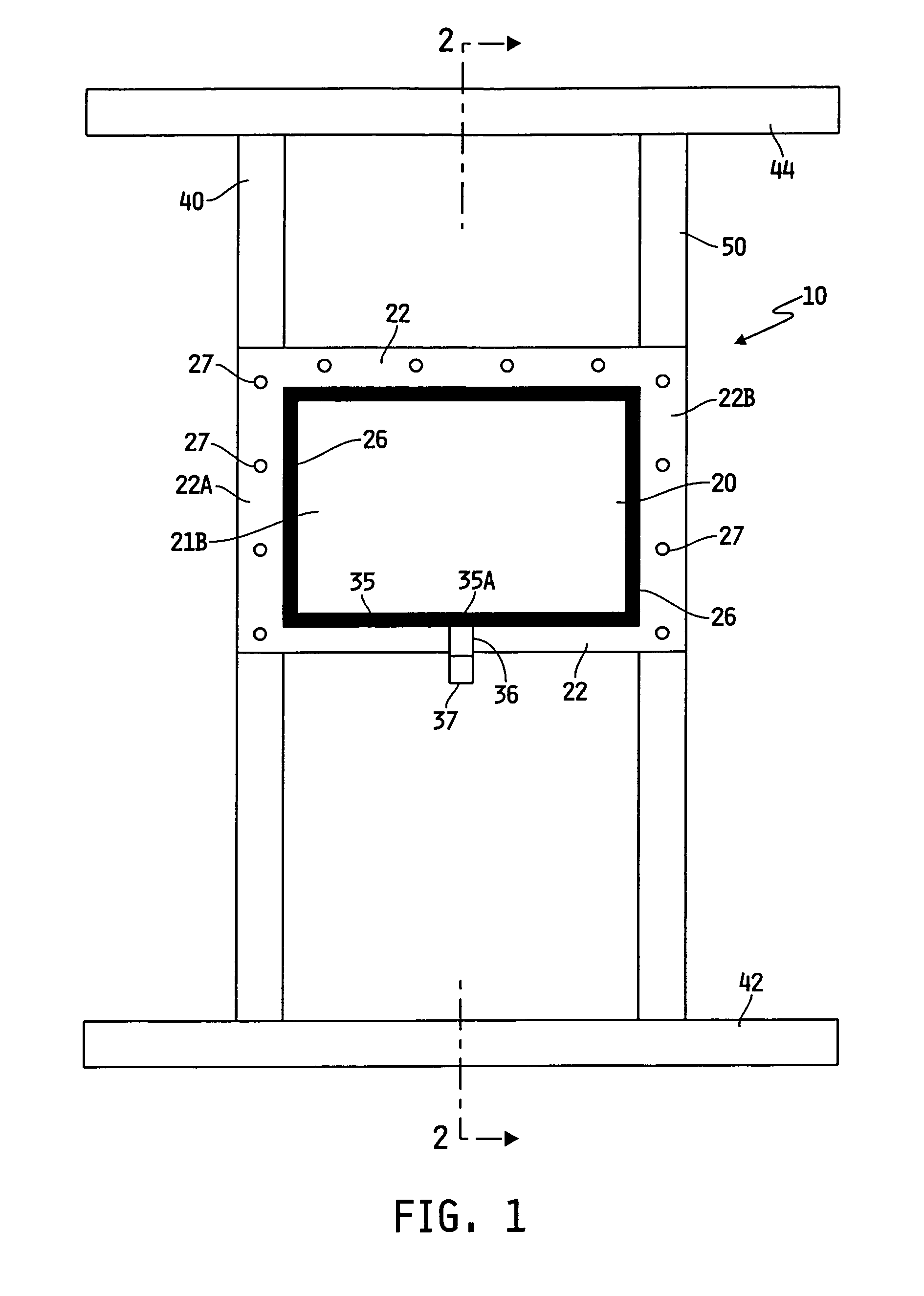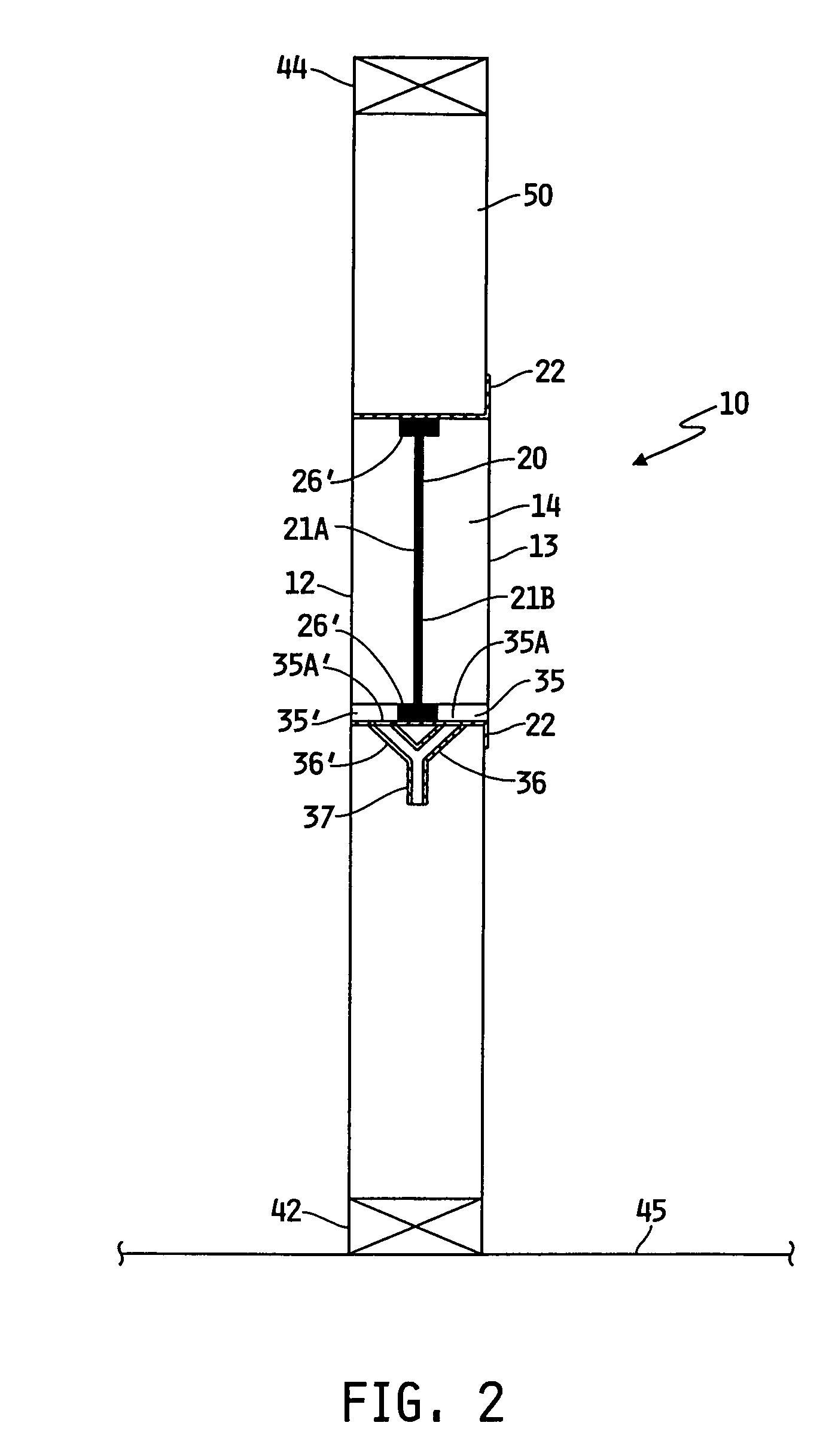Moisture condensation control system
a technology of moisture condensation and control system, which is applied in the direction of drying machines, air heaters, machines/engines, etc., can solve the problems of condensation on the surface, loss of moisture holding ability, mold, etc., and achieve the effect of efficient removal
- Summary
- Abstract
- Description
- Claims
- Application Information
AI Technical Summary
Benefits of technology
Problems solved by technology
Method used
Image
Examples
Embodiment Construction
[0020]For the purposes of promoting an understanding of the principles of the invention, reference will now be made to a number of illustrative embodiments illustrated in the drawings and specific language will be used to describe the same.
[0021]FIGS. 1-2 illustrate a preferred embodiment of a moisture condensation control system or device 10. The moisture condensation control system 10 can be incorporated into any suitable structural component or portion of a structure including for example and without limitation a door, a wall, a ceiling, a floor, a window, the basement, or the roof of the structure in order to control moisture condensation on and within the structure.
[0022]In the illustrative case where the control system 10 is installed or attached to the wall of a structure, the structure's stud wall section or frame generally includes a base stud plate 42 extending along and secured to, the floor joist(s) 45 of the structure and a plurality of studs that extend vertically betw...
PUM
| Property | Measurement | Unit |
|---|---|---|
| humidity | aaaaa | aaaaa |
| thickness | aaaaa | aaaaa |
| metallic | aaaaa | aaaaa |
Abstract
Description
Claims
Application Information
 Login to View More
Login to View More - R&D
- Intellectual Property
- Life Sciences
- Materials
- Tech Scout
- Unparalleled Data Quality
- Higher Quality Content
- 60% Fewer Hallucinations
Browse by: Latest US Patents, China's latest patents, Technical Efficacy Thesaurus, Application Domain, Technology Topic, Popular Technical Reports.
© 2025 PatSnap. All rights reserved.Legal|Privacy policy|Modern Slavery Act Transparency Statement|Sitemap|About US| Contact US: help@patsnap.com



